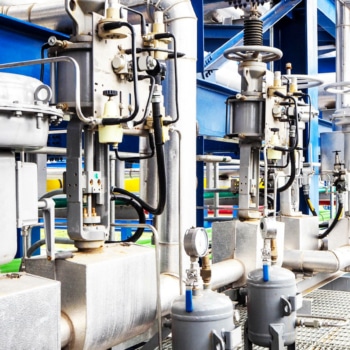Plate Heat Exchanger Repair
As with any other piece of plant or equipment, a heat exchanger needs regular maintenance to ensure optimum performance. Fortunately, Plate Heat Exchangers are generally easier to maintain than other types of heat exchanger, and problems tend to be easier to identify. Planned maintenance is essential, and should be carried out at six-month intervals, even if the PHE appears to be functioning normally.
Speak with our experts
Fill out our quick and easy contact form with your enquiry and we'll get back to you.
Planned PHE Maintenance
Without regular planned maintenance, a PHE’s efficiency will reduce over time due to fouling. As deposits build up in the grooves of a plate, the heat transfer capacity of that plate diminishes. The more fouling there is on a plate, the more the performance will reduce, and therefore, early detection is needed in order to avoid extended downtime and excessive remedial costs.
A typical planned maintenance inspection would first involve a visual check to spot any obvious signs of leakage. If no leakage were to be detected, then the gap between the outside pressure plates would be measured to check that the plate pack is tightened to specification, that the carrying and guide bars are lubricated, and that the gaskets have no apparent damage. The pressure drop would be checked to ensure that it is within expected limits, by recording pressure gauge readings on each side of the PHE.
If, following planned maintenance there is a high pressure drop reading, fouling is highly likely and unscheduled maintenance may be necessary. It is possible that the problem could be somewhere else in the system, but if all pumps are working properly and there are no restrictions elsewhere in the system, the PHE will need to be cleaned. Valveforce's sister company Heatxforce Limited offers two cleaning options:
Clean-In-Place
Periodic cleaning is the most effective form of maintenance and should be carried out at the first sign of fouling. Most PHE’s can be maintained with a clean-in-place (CIP) process, where it is not necessary to open the plate pack.
CIP is carried out by draining both sides of the PHE and isolating, using the system isolating valves. If the valves are passing, it may be necessary to fit spades. Once isolated, a water diluted cleaning fluid is circulated through both sides via a tank, counter to the direction that they run in operation, until the fluid runs clear. If the pressure drop is still high after putting the PHE back in service, and it is still underperforming, then it will be necessary to open up the plate pack and clean it manually.
Manual Cleaning
If the CIP process is unsuccessful, it is unlikely that the flow plates can be cleaned effectively on site. In this instance, it is common practice to strip the PHE and remove the entire plate pack from site where the plates can be cleaned using high pressure steam or by cleaning ultrasonically. Whilst off site, the plates and gaskets can be checked for defects. Where it is impractical to remove the plates from site due to handling or downtime issues, the plates can be cleaned using a combination of soft brushes, non-abrasive scourers and pressure washing, however, depending on the type and severity of the fouling, this method may not be as effective as taking the plates off-site. To avoid this situation, our customers frequently purchase a spare plate pack which can be fitted in a fraction of the time required for cleaning and will minimise downtime and loss of production. Quite often, clients will remove the plate packs and send them to us for servicing. Whilst being serviced, each plate will be tested individually for defects and cracks using a luminescent dye under ultraviolet light. New plates can be provided where failures are detected, and new gaskets fitted where necessary. Heatxforce also offer a collection and delivery service.
At Valveforce we are here to help, please call the team to discuss your requirements on 0121 711 1908 or email us at info@valveforce.co.uk
Valveforce are part of the Force Group of Companies, which also includes Controlsforce, Heatxforce and Pumpforce.


